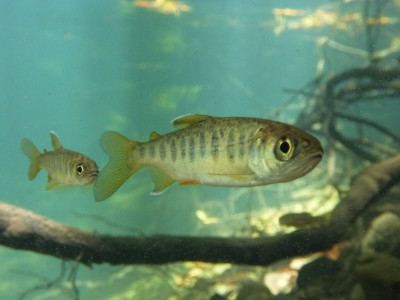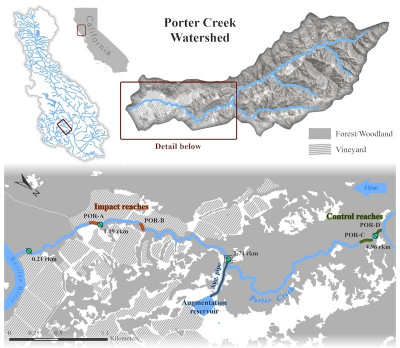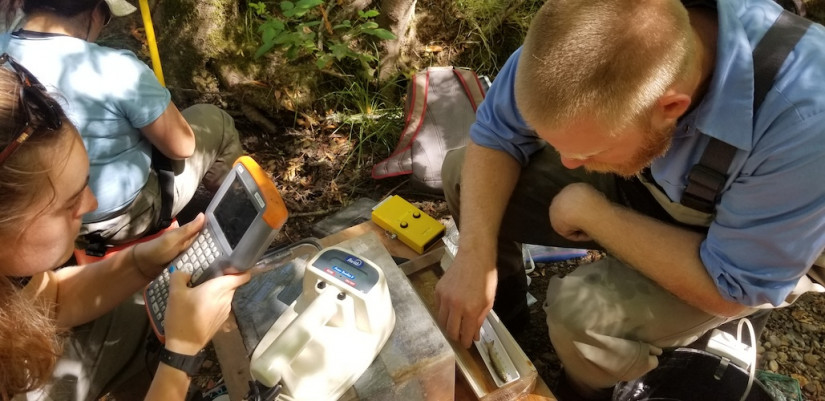FOR IMMEDIATE RELEASE
MEDIA CONTACT: Boyce Upholt (bupholt@ucsd.edu)
January 23, 2024
In coastal California, adult coho salmon and steelhead swim up small streams to breed during the winter rainy season, when flows are high. Many of their offspring spend their first months or years in those same streams where, during the summer dry season, flows can become dangerously low.
While many salmon streams in California were likely intermittent historically, intensive human land and water use along with climate change now often reduces flows to levels that can prevent salmon from completing their life cycle. During dry summers, these fish live on “a knife’s edge,” explains Gabriel Rossi, a research scientist at the University of California, Berkeley, and the lead author of a new paper, published in the North American Journal of Fisheries Management in September. Even if a stream does not dry out, decreased flow can cause shifts in water temperature or dissolved oxygen that make the streams uninhabitable to the fish.

The paper, co-authored by researchers at the University of California, Berkeley, and California Sea Grant, suggests that releasing cool water from a small off-channel pond into the stream channel can mitigate some of the human impacts and help keep juvenile fish alive during the summer dry season.
While intuitive, the idea of “augmenting” streamflow had been studied only in large, regulated rivers, where water is released from dammed reservoirs. The new paper quantifies for the first time how small-scale augmentation can benefit fish in smaller streams.
Porter Creek, a tributary of the Russian River in Sonoma County, is fed by rainfall, almost all of which arrives between November and April. In most summers, several reaches of the creek dry out. The researchers partnered with managers of E. & J. Gallo Winery, who were willing to release water stored in an agricultural pond on their property, as well as the Sonoma Resource Conservation District and Trout Unlimited. The water was released into the stream channel during the summer dry season. Rossi and his team added just half a cubic foot of water per second – an amount so small that it might seem negligible. The Russian River, for example, typically flows at about 160 cubic feet per second during the summer.

“But we found that releasing even a very small amount of water can increase the probability that fish will survive,” says Mariska Obedzinski, an extension specialist at California Sea Grant and a co-author of the paper.
The study compared two reaches of the creek upstream of the augmentation to two reaches downstream. In 2020, a moderately dry summer, significantly more coho salmon and steelhead survived in the reaches with the added water — an increase of 24% and 20%, respectively. Dissolved oxygen and the depth of flow over riffles also increased significantly. Other stream health indicators improved as well, although less noticeably: For example, the numbers of benthic macroinvertebrates — organisms such as worms, crustaceans and juvenile aquatic insects — drifting in the stream rose slightly.
“In highly impacted watersheds like the Russian River, creative solutions like this are needed to keep the salmon populations going until the benefits of longer-term restoration kicks in,” says Obedzinski. While flow augmentation alone is not going to bring salmon back from the brink of extinction, it is one more tool that willing stewards can use to offset the impacts of climate change and development. Rossi notes that similar projects are underway now on other California streams.
“It's important to know that there are things we can do at a local scale that have tangible, measurable positive effects on the salmon that matter so much to us,” he says. “These are endangered but culturally important species worth preserving.”
